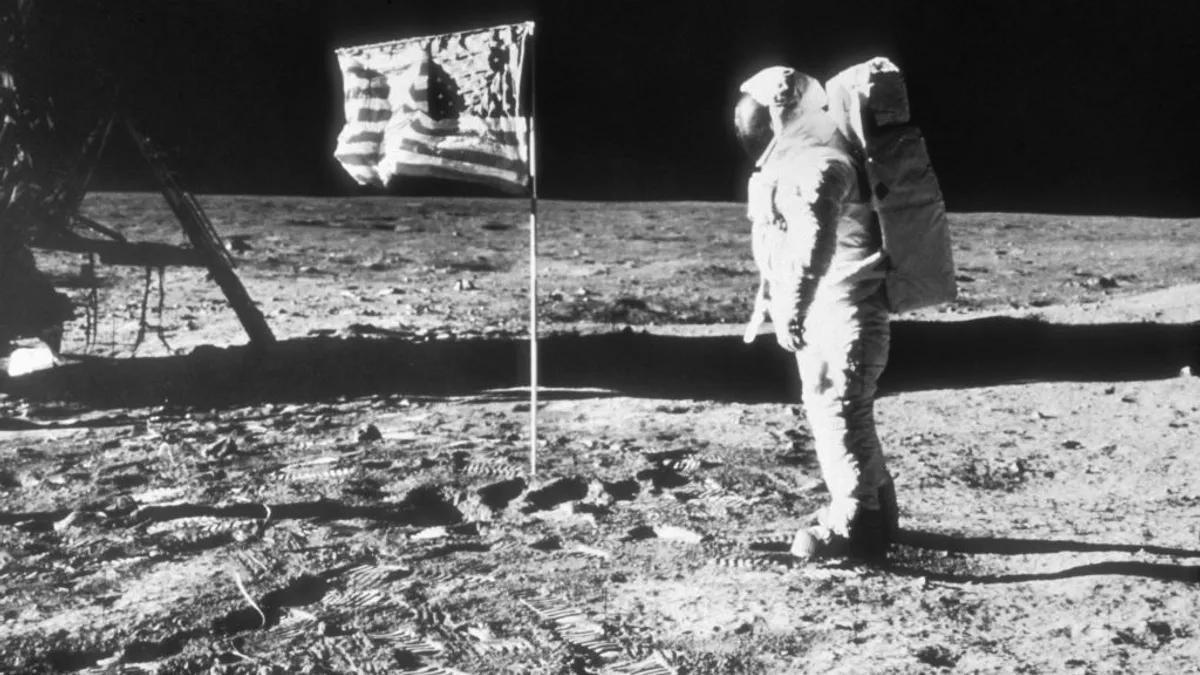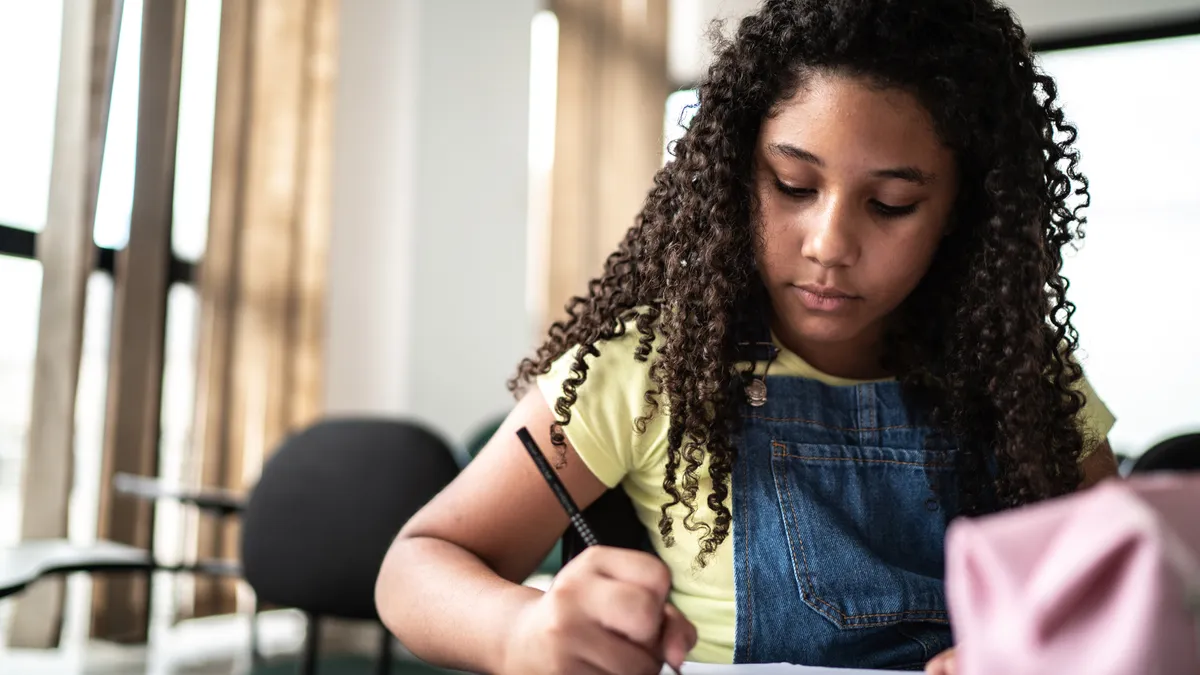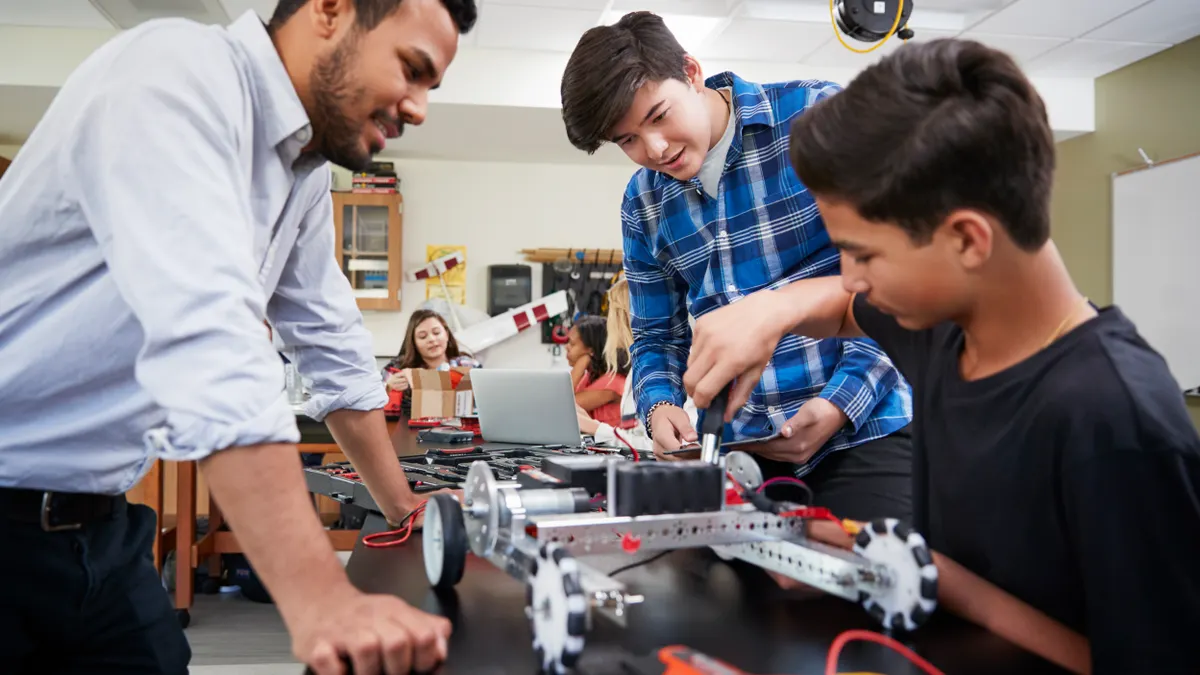Born in the 1980s, Matthew Siegler remembers when hearing about humans going to the moon felt like ancient history.
Now an associate professor of planetary sciences with the University of Hawaii, Siegler is thrilled by the upcoming crewed missions to the moon — and he sees opportunities where educators can help their students gain a sense of understanding and anticipation of this soon-to-be historical event.
“You want to focus on the exciting and new for this generation, because I think [lunar missions] have been positioned as ‘been there and done that’ for 50 years,” says Siegler, who is also a research scientist with the Planetary Science Institute. “I really think getting the idea that this is exciting and new is important.”
NASA has planned several missions into space in 2024, including SpaceX Crew-8, which launched on March 3 and sent three NASA astronauts to the International Space Station. Artemis II, which will send four astronauts around the moon, was planned for this year but has been delayed to 2025.
Still, educators believe this is a ripe time for students to learn about space exploration today and the significance of past lunar missions.
Alongside the science behind traveling into space, experts suggest the impending 55th anniversary of Apollo 11 landing on the moon on July 20, 1969, is also an opportunity to help students gain media literacy skills by examining the misconceptions around past lunar missions and how to assess and debunk those claims.
Here are ways educators can use the upcoming lunar missions to engage students — from media literacy to embracing their curiosity.
Discerning fact and fiction
The lunar missions of the 1960s and early 1970s may read like ancient history to students — and that means they could be swayed by stories that imply these events didn't happen. Helping provide students with tools to assess the media they’re consuming, from newspaper coverage of the day Neil Armstrong took his first step on the moon to archived televised accounts of the landing, can give them more confidence in trusting what they see.
Educators can provide access and direct students toward original sources around human spaceflight, for example. And they can teach students what makes an information source trustworthy and what may not.
Bob Riddle, a NASA solar system ambassador and former planetarium director for the Kansas City School District in Missouri, says one way to help educators debunk some of those claims is to ask students to think about how many NASA employees at the time — including famed mathematician Katherine Johnson, whose work helped propel John Glenn into orbit — would have been involved in creating a fake story and agreeing for the past 55 years to keep the secret.
Add in the fact that seven countries have landed on or orbited the moon, and that would require thousands of people worldwide to keep a secret.
“That would be an incredible hoax to do,” Riddle says.
Discovering cross-curriculum opportunities
Anchoring the discoveries from the moon missions into familiar fields of science can give students further opportunities to explore the practical applications of what they’re learning.
Siegler says the field of planetary sciences encompasses multiple disciplines, from climate science and geology to engineering to chemistry. Not only do these fields play a part in helping scientists understand the lunar surface — they also provide information that can help future crewed missions gear up for their trips.
Instruments sent on early unmanned missions will help capture information that will act as stepping stones to get to the moon's surface.
Some experiments include looking at surface temperature on the ground at different locations, offering educators a way to talk about fundamental physics such as thermodynamics. Other future missions — like VIPER (Volatiles Investigating Polar Exploration Rover), which will go to the moon’s south pole and drill in search of ice — offer opportunities to draw connections to geology and chemistry.
Learning how to ask questions
When NASA first sent humans to the moon in 1969, scientists didn’t know how old the moon was, how it formed, or even the processes acting upon it, says Noah Petro, a lunar scientist and project scientist for Artemis III. Over the past nearly six decades, more has been gleaned, including that the moon likely formed very early in the solar system and underwent its evolution separate from Earth.
Keenly, too, the samples brought back from these missions don’t represent the entire moon in the same way that samples taken from a few spots on Earth wouldn’t tell the entire story of our planet.
“We’re updating these questions from 50 years ago,” Petro says. “We now have a hypothesis to ask and refine new questions.”
These processes can also help students learn to engage their curiosity and ask questions across a variety of subjects, especially in math and science.
Teachers can ask students to come up with questions around the lunar missions that interest them and then explore them. For example, students could fill a backpack and walk around their neighborhood, thinking about the amount of energy required for that task compared to an astronaut walking on the moon, where there’s much less gravity than Earth, in a space suit.
Petro suggests students would enjoy engaging with the topic through their own curiosity rather than being told to complete a series of rote tasks with a right or wrong answer. He says science is less about correct and incorrect answers and more about asking questions and refining them.
“That's a very important lesson to also teach, about what science is and is not,” Petro says. “It’s about evaluating a hypothesis. You have to go into it saying, ‘I don’t know the answers.' Finding answers is the joy of doing science.”




















